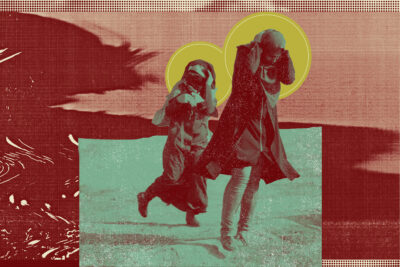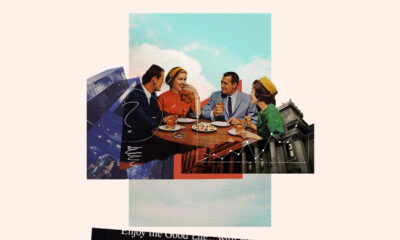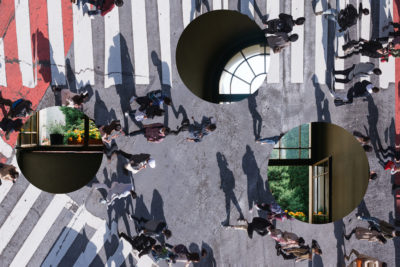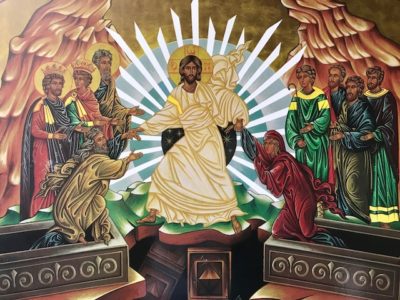Holy Saturday: Christ’s Descent into Hell
Holy Saturday: that gap between Cross and Resurrection has been imagined in Christian Traditions as that time when Jesus goes down into Hell to free the souls of all those whom he loves, to lead them to light and life. This is a story from the Cenacolo Community in Medjugorje: a story of that journey from death to new life with Jesus.
The Cenacolo Community was founded by Mother Elvira Petrozzi in 1983 to provide a house of welcome and hope for young people struggling with addiction, alcohol or substance misuse. In Community they are able to rebuild their lives. Many have even found vocations as missionaries and Religious. There are now 50 Communities worldwide including Italy, France (Lourdes), Ireland (Knock), Austria, Croatia, Brazil Mexico, Bosnia Herzegovina (Medjugorje), Poland, Dominican Republic and the USA.[i]
In the Chapel of the Community “Cenacolo” in Medjugorje there is a huge icon called “Christ’s descent into Hell”. This icon is an interpretation of a traditional theme in Orthodox Christian iconography: the Resurrected Lord descends into Hell, his robe is flowing upwards, which symbolises his dramatic, enthusiastic and urgent descent into the underworld to bring new life to those who have died. In the icon, the gates of Hell have been broken and torn apart. The power of the devil and death have been destroyed through the life-giving Passion, Death and Resurrection of Jesus.
In the icon, Jesus is reaching out to two figures, they are Adam and Eve; and Jesus is “tugging” them out of the grave. This symbolises that Jesus’ life-giving Grace, is given to all humankind, even back to the beginnings of humanity.
As we look to the left, we see three characters: the Hebrew kings David and Solomon; and closest to him, Elijah, who was also seen as a prototype of John the Baptiser. As we look to the right, the figures vary from icon to icon, but usually they represent the “just ones” who served God in the time before Christ: sometimes Moses and Abel, or the three young men who witnessed to God in the book of Daniel. In traditional icons there are three figures here. In the Cenacolo icon there are four figures: why?
The Cenacolo icon was painted by three young men from the Community. None of the young men had any artistic training. Their work was a labour of duty, devotion and love: that “shared hard struggle” to coin a phrase from the Iona Community which builds the bonds of solidarity through service. The process of creating the icon from their very little artistic talent and training in many respects mirrored their struggle to overcome together the bonds of addiction and abandonment which had robbed them of so much life, friendship and community. From the very little which they felt they had when they entered Cenacolo, they embarked on creating a huge and inspiring work of art: a celebration of the Resurrection which in itself became a symbol of their own resurrection.
When I was there, Paul: a 26 year old man from the USA who had struggled with drug and alcohol addiction from the age of 14, explained that the men of the Community identified so strongly with Adam and Eve. In the icon they are crouched and they are old; because, Paul explained “drugs made us feel old. Drugs robbed us of our lives”. But Jesus reaches into that place of despair and pulls them free into his light.
Paul explained the mystery of the fourth figure in the icon, un-bearded and standing closest to Jesus. “This figure” said Paul “is Nicola, the young man loved by the Cenacolo Community who died of an Aids related illness”. Paul said that Nicola’s life and death in the Community had been such a witness of patience, service and love that his fellow brothers considered him one of the “just ones”, a prophet or a saint; and they wanted him to be remembered in the icon. They wanted him to watch over the Community also. And they wanted to share in the hope and the joy of his resurrection with Jesus.
I found Paul’s testimony deeply moving. Discovering one of the “just-ones” who had lived with HIV and died with an Aids related illness at the heart of Medjugorje is an inexpressibly powerful sign of hope for me. Nicola is remembered without judgement or stigma. He is remembered by the Community not because of his struggle with addiction or his HIV status: he is remembered because his life and death witnessed to a renewal of his relationship with God lived with profound intensity. This call to new life is a call to all of us whatever our HIV status. The hope of the Resurrection is a hope for all of us whoever we are.
During his last few months, a nurse who was with him tried to cheer him up: “I told him that he was extraordinary…he avoided my words: too sugary for his taste. He answered me kindly and dryly and said ‘you should have seen me before!’ I was really interested in Nicola’s personality and life. This was because the mistakes of his past and the trial of his illness had led him to a deep faith…His courage seemed to say ‘Life is a gift from God, and that’s all there is to it!”[ii]
[i] https://www.indcatholicnews.com/news/11420
[ii] Community Cenacolo (1999) Beyond Aids
Related Stories

Stations of the Cross in Palestine
In Passionist spirituality, the Stations of the Cross are a journey transcending time: repeating in everyday suffering, especially now in Gaza.
Jan 25 2024

A parable to remind us that resistance matters, even in mundane things
Paul McGowan, from our friends at Pax Christi, re-examines the well-trodden 'Parable of the Talents'. What is this is not a lesson about 'gifts', but a story about collaboration and resistance?
Dec 01 2023

Experiences of Passionist prayer, pt. 3: Joanne Crompton
How do we pray? What role does prayer take in our lives? We asked three people pursuing a Passionist spirituality how their sense of prayer has changed over time.
Jul 05 2023

